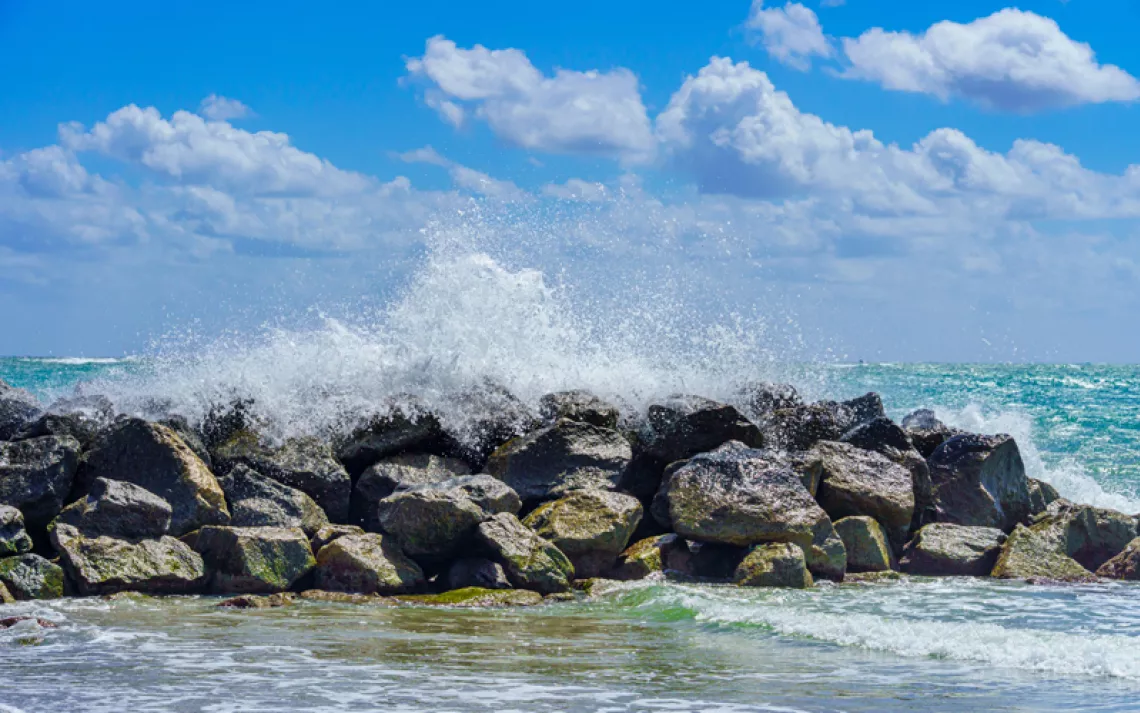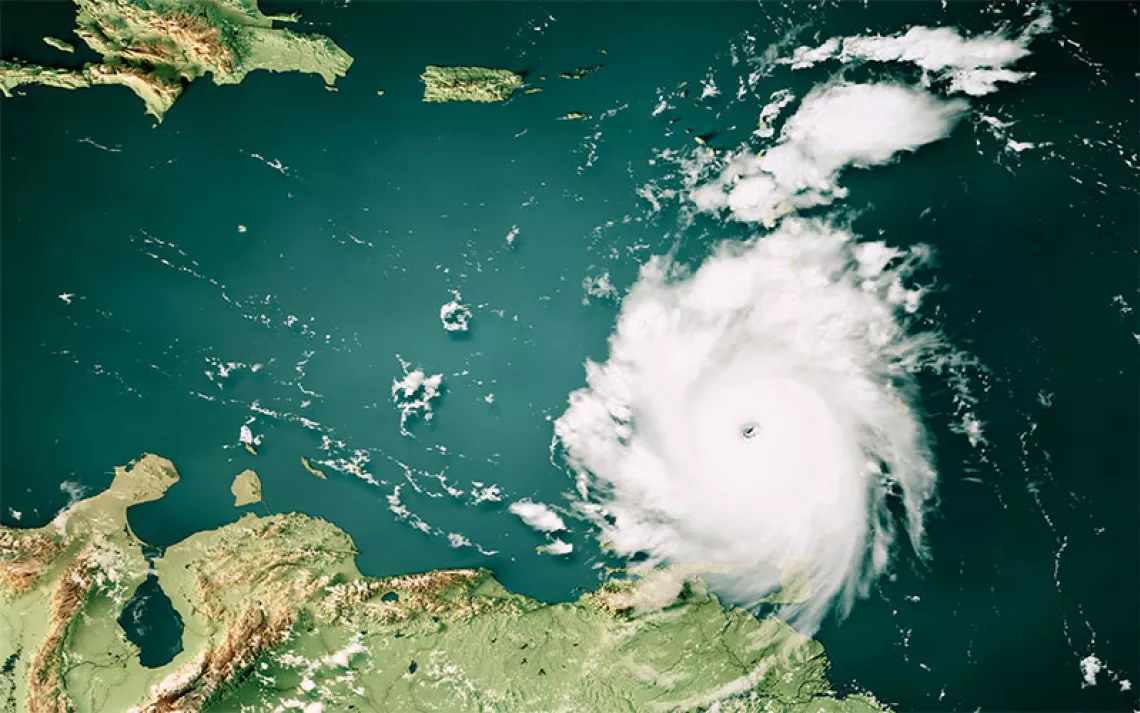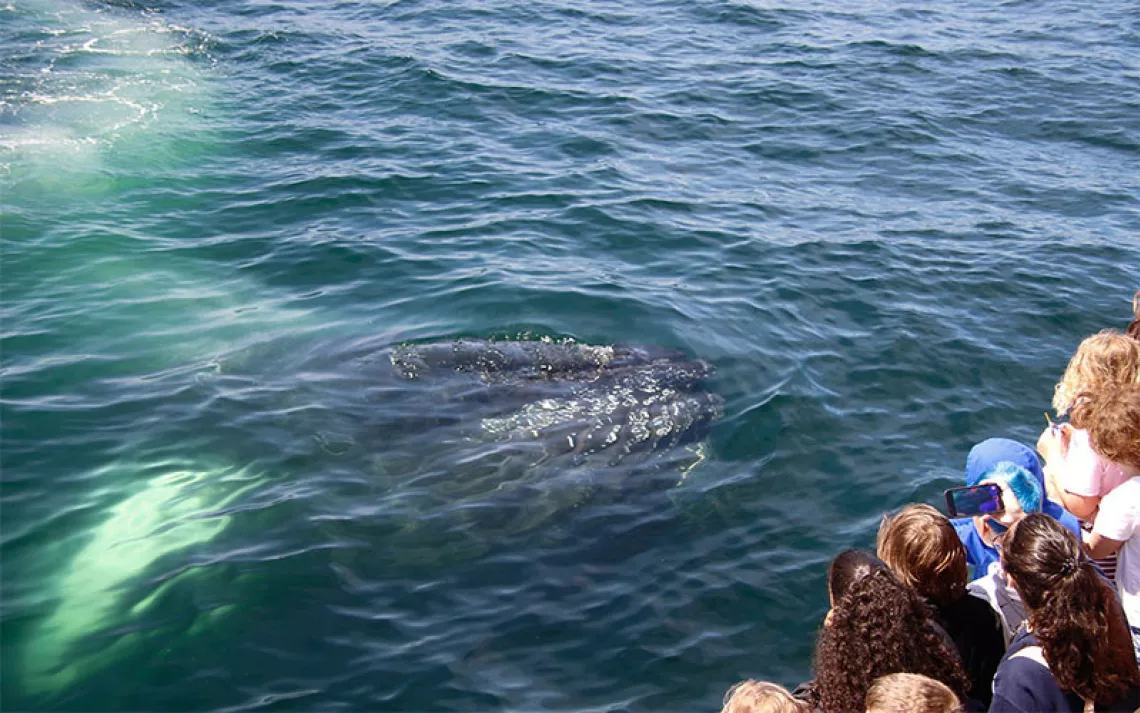Sea Otters and Survival in Southeast Alaska
Sea otters have returned to the region and are competing with humans for shellfish

Photos courtesy of Alix Morris
Off the rocky shoreline of Prince of Wales Island, a sea otter playfully rolled through the waves in the wake of a passing boat. As I scanned the horizon looking for others, a bald eagle soared just a few feet above my head, the noise so loud and piercing that I initially mistook it for a floatplane. When I looked back at the water, the otter was staring curiously in my direction.
A second sea otter emerged nearby, clutching a Dungeness crab between its paws. I watched as it smashed the crab against its belly before tearing out the meat with its teeth. Fully engrossed in the scene, I jumped at the sound of a man’s voice behind me.
“What are you looking at?”
“I’m just watching those sea otters there in the harbor,” I said.
“You must not be from around here. Those otters are our locusts. They’ve stolen everything from us.”
*
I had arrived on the island to meet with a research team from the University of Alaska, led by marine ecologist Dr. Ginny Eckert. For nearly 10 years, Eckert has been studying the relationship between sea otters and their habitat in Southeast Alaska.
In the mid-1700s, an estimated 100,000 to 300,000 sea otters lived along the north Pacific coast—from California and Alaska, along the Pacific islands, and as far as the coasts of Russia and Japan. In 1741, Russian explorers began commercially harvesting sea otters for their fine, dense fur. Over the next 150 years, as the fur trade continued, the species was hunted to near extinction. In 1911, sea otter hunting was banned as part of the International Fur Seal Treaty. By that time, however, the colonies of otters that had existed in Southeast Alaska had been eliminated.
 Marine ecologist Dr. Ginny Eckert
Marine ecologist Dr. Ginny Eckert
As the populations declined and eventually disappeared in this region, the species they fed on, including Dungeness crab, clams, and sea cucumbers, began to flourish. This quickly led to the development of a new, thriving fishing industry.
In the 1960s, the Alaska Department of Fish and Game released roughly 400 sea otters in Southeast Alaska as part of a larger effort to reintroduce the animals to their former habitat. Since that time, this top predator has made a significant comeback; its population in the region is now estimated at more than 25,000.
While some conservation groups have hailed this as an environmental success story, local fishing communities have been looking for ways to manage the exponential growth of these animals.
Sea otters are voracious eaters. Unlike other marine mammals, they don’t have blubber, or a fat layer, to stay warm, so they rely on their thick fur and high metabolism to survive in cold ocean waters.
“Sea otters eat about 25 percent of their body weight in food every day,” said Dr. Heidi Pearson, associate professor of marine biology at the University of Alaska. “So if you think of a 150-pound person, that would be like eating 35 to 40 pounds of food a day.”
As a result, these predators have decimated the shellfish populations in the region, directly competing with the commercial fisheries, as well as the subsistence fishing practices of Alaska Native communities. Sea otters represent one of the biggest threats to food security in the region.
“The people here, particularly on Prince of Wales Island, have a very negative view of sea otters,” Eckert said. “Often when I tell them that I’m studying sea otters, they say, 'Well bring your shotgun.'”
The animals are currently protected under federal law by the Marine Mammal Protection Act, which mandates that only Alaska Native communities can hunt them, up to a certain limit per year. But illegal hunting is known to occur.
“We need to remember that there isn’t a memory here,”Eckert said. “Even dating back multiple generations, they don’t remember a time when there were sea otters. They remember the system as they first saw it, as their grandparents first saw it, and sea otters have changed that system.”
*
Early one morning, I met Eckert and her team at the dock and climbed aboard the Ishkeen, a 27-foot North River research vessel, before setting off in search of the charismatic and controversial marine predator. The water was placid as we motored our way along the coast to nearby seagrass meadows—prime sea otter habitat. We were accompanied by two citizen science volunteers who had traveled to Alaska to work alongside Eckert.
It wasn’t long before we had our first sighting.
A raft of sea otters raised their heads out of the water to watch us. We kept a safe distance so as not to frighten them, although they appeared to be more curious than scared. They floated on their backs with the pups balanced on their mothers’ bellies as they stared at us, wrapped in a bed of kelp to keep from drifting.
The research team got to work, counting the number of otters and recording their behavior.
Eckert and her colleagues are measuring the impact of sea otters on seagrass meadows, one of the most widespread habitats in coastal areas around the world, and an important carbon sink. One of the major roles of seagrass is to provide a nursery for juvenile fish, including salmon, herring, and rockfish.
A positive link between sea otters and kelp, another important habitat for fish, has already been documented. Eckert’s findings could have implications for fisheries if otters are shown to influence the health of commercially relevant species
“What we’re seeing preliminarily in the research is that where you have sea otters, you have this really healthy, vibrant seagrass bed,” Eckert said. She thinks this is because with more sea otters, there are fewer prey species like crabs, which means there are more insect-like amphipods and isopods to feed on the algae that competes with seagrass. “Where you have sea otters, you have more seagrass; where you have more seagrass, you have more fish,” she said.
By positively impacting seagrass meadows, sea otters may also be playing a role in carbon sequestration, which has important implications for climate change. “If we have more seagrass habitat, just like if we have more forests, then we can potentially reduce the amount of carbon dioxide in the atmosphere,” Eckert said.
It remains unclear, however, whether the positive contributions of sea otters to their food web will be enough to counteract the demands of the shellfish and crab industries that have developed in the 150-year absence of this top predator.
In January, crabbers and dive fishermen (people who fish for clams, sea cucumbers, and sea urchins—all sea otter favorites) from the Southeast region joined the Alaska Board of Fisheries meeting in Sitka to advocate for better management of the growing sea otter population.
“Nobody in my industry wants to see an eradication of otters,” said crabber Mike Lockabey. “We want to see a balance.”
In February, Alaska state senators Bert Stedman and David Wilson issued a joint resolution to the U.S. Congress requesting state management control of sea otters to protect the commercial and subsistence fishing industries. It reads in part:
The reintroduced sea otter population has proliferated without management, consuming unquantified yet significant volumes of crab, abalone, urchins, sea cucumbers, clams, and other shellfish resources on which Southeast Alaska’s human residents rely.
The resolution calls for federal agencies to work with the Alaska Department of Fish and Game and Alaska’s Native and non-Native leaders to manage the sea otter populations by loosening hunting regulations. It also advocates for changes to the Marine Mammal Protection Act that would allow hunters to sell and export sea otter pelts.
Last month, the Alaska Senate voted unanimously to pass the resolution. It is now with the House of Representatives for consideration.
“Food security is a big issue,” Eckert said. “But on the flip side, here is this animal that we as humans should respect and revere and have a place for.”
 The Magazine of The Sierra Club
The Magazine of The Sierra Club



